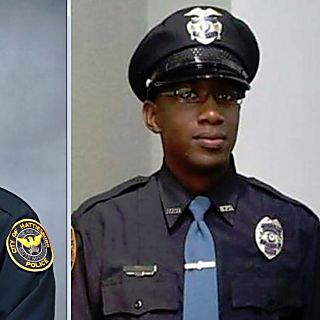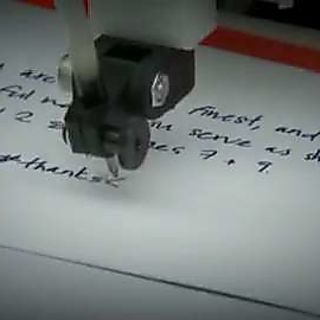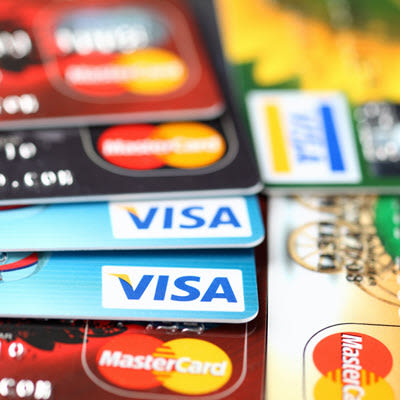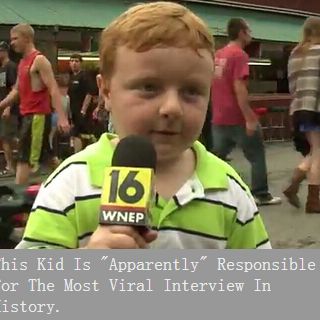
ELIZABETH MURRAY/FREE PRESS
Green Mountain Bicycle Club President Kevin Bessett speaks at the memorial bicycle ride in Hinesburg on May 3 for victims of a fatal crash.

DAN ENDERS/for the FREE PRESS
On Sunday, almost 400 people turned out to ride bicycles in memory of Richard more
After Vermont went four years without a bicyclist being killed on the state's roadways, two died within two weeks this spring.
The first, Kelly Boe, 55, of Middlebury was killed in Weybridge by a man now accused of drunken driving while Boe was cycling with his wife.
Fewer than two weeks later, Richard Tom, 47, of Hinesburg was killed when a Champlain Valley Union High School senior hit Tom with his car. The teenager, Joseph Marshall, 17, of Hinesburg also died in the crash, which police said was caused by Marshall's excessive driving speed.
While neither crash appears to be the fault of the bicyclist, there are things to be learned about road safety for both cyclists and drivers, said Green Mountain Bicycle Club President Kevin Bessett. Bessett has been a bicyclist for close to 30 years, and he knew Tom as a friend. Bessett oversees one of the largest and the oldest cycling club in Vermont.
The Burlington Free Press recently sat down with Bessett to talk about responsibilities held by both bicyclists and drivers in making the roads safer.
Burlington Free Press: What are the main issues you see in Vermont between cyclists and drivers in sharing the road, traveling safely.
Kevin Bessett, President GMBC: There is a certain percentage of each population, of each segment, that creates a stereotype for the others. There are cyclists who make a bad name for people like me. I ride safely, and — not to say I haven't made mistakes — but there's a certain percentage of cyclists out there who make us look bad as a whole.
It's the same thing with drivers. There are some drivers who do things such as pass way too closely, turn right in front of you, and make a bad name for drivers.
It creates this animosity. I guess the problem I see is that in essence, people are not playing nicely together. Maybe it's a lack of respect for the other modes of travel that have been caused by a percentage of each mode.
There's definitely a lack of understanding on some motorists' part about the rights of bicyclists. There's also a lack of understanding maybe by a number of cyclists about how virtually every law that applies to drivers applies to cyclists too. But if I were to summarize, maybe it is a lack of respect.
BFP: What do you see as some major misunderstandings on either side?
KB: Some drivers don't understand the rights of bicyclists, and some bicyclists don't understand that they have to follow the rules of the road — for example, stopping at stop lights and stopping at stop signs. It happens in Burlington frequently, and it seems to happen with college students or young people.
Drivers don't understand that cyclists have a right to be on the road, and some cyclists don't understand that they have a responsibility to follow the rules of the road.

GLENN RUSSELL/FREE PRESS
A roadside memorial on Route 116 in Hinesburg is seen on Monday, April 27, more
BFP: What do you see as some of the bicyclists' main responsibilities when riding on the road to make it safe for everybody?
KB: It depends on where you're riding.
One of the main complaints that drivers have of cyclists is that some ride two abreast. It's actually legal to do that as long as there's a clear line of sight and it doesn't impede the flow of traffic, which is kind of left up to interpretation.
The way that I ride is I have a mirror on my bike, and if I see a car approaching from behind, even if there's not a car coming the other way, I'll single up because I want to be proactive in sharing the road.
I think that if cyclists were more proactive in making an effort to show they're sharing the road by more respect ... and in essence take the high road and be visible and show you're doing something to give the driver a little more room, then you're more likely to get room from the driver.
BFP: Especially after Richard Tom's crash, you were saying that you were hoping people would take initiative to be more visible. Will you explain some of those ideas?

COURTESY
Kelly Boe, the manager of Middlebury College’s biomass heating plant, was killed when his bicycle was struck by a car in Weybridge.
KB: Unfortunately in Richard's situation, and in what happened to Kelly Boe too in Weybridge, I don't know if anything would have helped in those cases.
It doesn't have to be just cyclists, but runners and any non-motorized user of the road, can increase their visibility. That can be done through wearing brighter clothing. I also have a flashing light on the back of my bike that has a flashing pulse, and you can see it from a mile away. That immediately alerts a driver from behind that I'm there, and I think that's really important.
For the drivers that are approaching from the front, there are some cyclists who ride using a front light. That's beneficial too.
BFP: On the other side of things, what do you see as a driver's main responsibilities in making the roads safe for everyone?
KB: People in our society are always in a rush. I've rushed before. Sometimes, if there are runners or cyclists on the road, is it really worth trying to squeeze past the cyclists or the runners? In that case, you can either crowd them or go into the lane with an oncoming car. I mean, what is so difficult about slowing down?
I think just realize when you're in a rush. Whenever something bad happens, you're in a rush and you're not focused on what's at hand.

COURTESY
Richard Tom, who was killed in Hinesburg, is seen on a cycling trip in France in 2003.
BFP: For the fraction of people you say are the rule-breakers, what do you see are the rules most broken both for cyclists and for drivers when they're interacting on the road.
KB: When there's an automobile and a cyclist, and the car is passing the cyclist, the main thing that I see broken is that there's supposed to be a three-foot passing buffer. Maybe they aren't aware of it.
With cyclists, the biggest infraction is not stopping at stop signs. I see stop signs being blown through more then traffic lights.
I had a really bad brain injury in 1990 and should have died after a motorcycle crash. If people only knew what it's like to recover from a really bad crash, I think some people would be doing things differently.
BFP: Since you've been a cyclist, what have been the biggest improvements in the area of safe cycling and safe roads that have happened from then until now?
KB: I do think there's more awareness in sharing the road, and I think there's more on not blowing through stop signs as a cyclist. I think what has helped with the latter is that cyclists are getting ticketed, which I am all for. If you break the law, you get a ticket.
I do think that through Local Motion's efforts, and I hope through the efforts of GMBC of trying to spread the word about safety and doing the right thing that it has helped a little bit.
Sharing the road and stopping at stop signs are still issues, but I've seen improvements.
BFP: What improvements do you see that still need to be done, or that need attention?
KB: It's reaching out to drivers and cyclists about sharing and knowing we're all in this together. We're all sharing the road, we all pay taxes. We need to continue educating drivers to get the message across that it's okay to slow down.
We also need to keep talking with cyclists about how not to be a target. Take actions to be proactive in sharing the road. Local Motion had a program about six or seven years ago, and the tagline was, "Give respect, get respect." Being proactive about sharing the road will get you respect from a lot of people.
BFP: Can the state do anything to make the roads safer for everyone?
KB: I know the Agency of Transportation has been pretty active that when they're building roads, they're taking bicycle lanes or non-traffic lanes into consideration.
I guess what I'd love to see is more public service announcements. Promoting safety on the roads needs to be mass-marketed. If we want to bring about change as far as safety goes, people should be bombarded with what making the right decisions on the road are. Eventually, people will get keyed into it.
Contact Elizabeth Murray at 651-4835 or emurray@freepressmedia.com. Follow her on Twitter at www.twitter.com/LizMurraySMC.
Kevin Bessett's 10 Tips for Cyclists for Safety
1. Always ask yourself what your visibility is to the drivers around you. You want to be seen! Dress in bright colors.
2. Always ride with a rear flasher on – use one with a bright pulse. Consider a front flasher, and use a mirror.
3. To increase your visibility to drivers, take the lane when coming to a stop sign or red light. Also, take the lane when cycling at the speed limit (such as when traveling downhill). Taking the lane preserves you a "spot" in the road, and provides a safety buffer. Move right when your speed slows.
4. Use your arms to indicate your directional intentions to drivers.
5. Stop at traffic signs and red lights – it's the law.
6. Always be prepared for cars in your immediate vicinity to turn right in front of you.
7. Anticipate worst-case scenarios so that you are prepared to act if needed – this will save precious time that could save you from injury.
8. Practice emergency maneuvering and braking once a week to get comfortable with it.
9. Don't shut off your brain when you ride – you always have to be on the lookout for trouble (e.g. traffic, road surfaces, pedestrians, dogs, etc.). Always be mindful of the risks of riding on the road.
10. When a car is near, take high-road and make visible effort to share road. Making the first move makes a difference. Give respect – get respect.
Online resources:
• http://thegmbc.com — Links to various pages on bicycling and safety.
• www.localmotion.org/resources/rules — Information on the rights and responsibilities of bicyclists on the road.
•http://bit.ly/VTransbike — VTrans' compressive guide on bicycling.
•http://bit.ly/VTransshare — VTrans' guide on sharing the road.
• www.localmotion.org/advocacy — Local Motion page on how to get involved in bicycle advocacy.





No comments:
Post a Comment